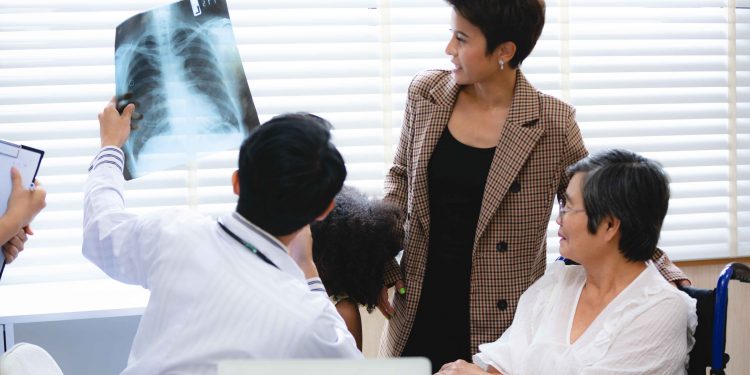Tuberculosis, commonly known as TB, is a potentially serious infectious disease that primarily affects the lungs, but can also spread to other parts of the body, including the spine, kidneys, and brain. It is caused by the bacterium Mycobacterium tuberculosis, which is spread from person to person through tiny droplets released into the air via coughs or sneezes. Despite being preventable and treatable, TB remains one of the top causes of death worldwide, particularly in low- and middle-income countries.
Understanding Tuberculosis
TB is an ancient disease, with evidence of its presence in humans dating back thousands of years. Historically known as “consumption” due to the significant weight loss experienced by patients, it was once a leading cause of death in many parts of the world. Although modern medicine has significantly reduced its impact, the disease continues to be a major public health concern.
TB is classified into two main types:
- Latent TB Infection (LTBI): In this form, the bacteria remain inactive in the body, causing no symptoms and being non-contagious. However, the bacteria can become active and develop into active TB if not treated.
- Active TB Disease: This form occurs when the immune system is unable to contain the bacteria, leading to symptoms and making the disease contagious. Active TB can develop shortly after infection or years later when the immune system is weakened.
Causes and Transmission of TB
The bacterium Mycobacterium tuberculosis is the primary cause of TB. It spreads through airborne particles when an infected person coughs, sneezes, talks, or sings, releasing tiny droplets containing the bacteria. Individuals who breathe in these droplets may become infected.
However, not everyone who becomes infected will develop TB disease. The risk is higher among people with weakened immune systems, such as those with HIV, diabetes, or other conditions that compromise immune function. Poor nutrition, smoking, alcohol abuse, and living in crowded or poorly ventilated conditions can also increase the risk.
Symptoms of Active TB
When TB becomes active, it manifests through various symptoms that affect the lungs and sometimes other parts of the body. The common symptoms of pulmonary (lung) TB include:
- Persistent Cough: A cough lasting more than three weeks, sometimes accompanied by blood or mucus.
- Chest Pain: Pain during breathing or coughing.
- Unintentional Weight Loss: Significant weight loss and loss of appetite.
- Fever and Night Sweats: Recurrent fever and sweating at night.
- Fatigue: Constant tiredness or fatigue.
If TB spreads beyond the lungs, known as extrapulmonary TB, symptoms may vary based on the affected organ. For example, TB of the spine can cause back pain, while TB affecting the kidneys might result in blood in the urine.
Diagnosis of Tuberculosis
Early detection is crucial in preventing the spread of TB and ensuring effective treatment. The diagnosis usually involves several steps:
- Medical History and Physical Exam: The doctor reviews symptoms, risk factors, and performs a physical examination.
- Tuberculin Skin Test (TST): A small amount of tuberculin is injected under the skin, and the reaction is observed after 48-72 hours. A positive reaction suggests TB exposure.
- Interferon-Gamma Release Assays (IGRAs): Blood tests that measure the immune response to TB bacteria, often used when the skin test is not practical.
- Chest X-ray or CT Scan: These imaging tests help detect lung abnormalities indicative of TB.
- Sputum Test: A sample of mucus coughed up from the lungs is tested to confirm the presence of Mycobacterium tuberculosis.
Prevention of TB involves:
- Vaccination: The Bacillus Calmette-Guérin (BCG) vaccine is given to infants in countries with high TB prevalence. It provides some protection against severe forms of TB in children but is less effective in adults.
- Early Detection and Treatment: Prompt identification and treatment of active TB cases help reduce the spread.
- Infection Control Practices: In healthcare and community settings, proper ventilation, wearing masks, and isolating infectious patients are important measures to prevent transmission.
Challenges in Combating Tuberculosis
Despite efforts to control TB, several challenges persist:
- Drug Resistance: The emergence of drug-resistant strains has complicated treatment. MDR-TB and XDR-TB require more complex, expensive, and prolonged treatment regimens.
- HIV Co-Infection: HIV-positive individuals are more susceptible to developing active TB, leading to higher mortality rates. The coexistence of HIV and TB presents a dual challenge for healthcare systems.
- Lack of Awareness and Stigma: In many parts of the world, a lack of knowledge about TB symptoms and treatment options, combined with social stigma, prevents people from seeking timely medical help.
- Limited Access to Healthcare: In low-income countries, the availability of diagnostic facilities and treatment options may be limited, hindering the effective control of TB.
Innovations and Future Directions in TB Control
To address these challenges, several innovations and strategies are being explored:
- New Diagnostic Tools: Rapid molecular tests, such as the GeneXpert MTB/RIF, can detect TB and drug resistance more quickly than traditional methods.
- Shorter Treatment Regimens: Research is ongoing to develop shorter and more effective treatment regimens that improve patient compliance and outcomes.
- Novel Vaccines: New vaccines are being developed to provide better protection, especially for adults and those with latent TB.
- Integrated HIV-TB Services: Providing combined HIV and TB care can improve the detection and management of both diseases.
The Role of Global Efforts in TB Elimination
The World Health Organization (WHO) has set ambitious targets to end the global TB epidemic by 2035 through the End TB Strategy. Key components of the strategy include:
- Integrated Patient-Centered Care: Focusing on early diagnosis, effective treatment, and support for patients.
- Bold Policies and Supportive Systems: Implementing healthcare reforms, social protection measures, and regulatory frameworks to address TB.
- Research and Innovation: Promoting the development of new diagnostics, treatments, and vaccines.
Tuberculosis remains a significant global health challenge, despite being preventable and curable. Understanding its causes, symptoms, and treatment is crucial for controlling the spread of the disease. While progress has been made in TB control, ongoing efforts are needed to address the challenges of drug resistance, co-infections, and limited healthcare access. Through continued research, public health initiatives, and global collaboration, there is hope for a future where TB is no longer a threat to human health.











